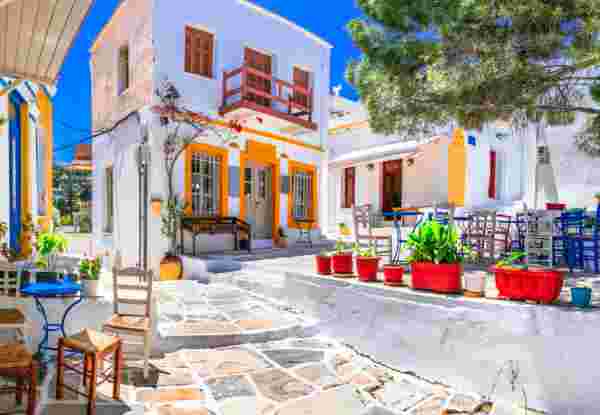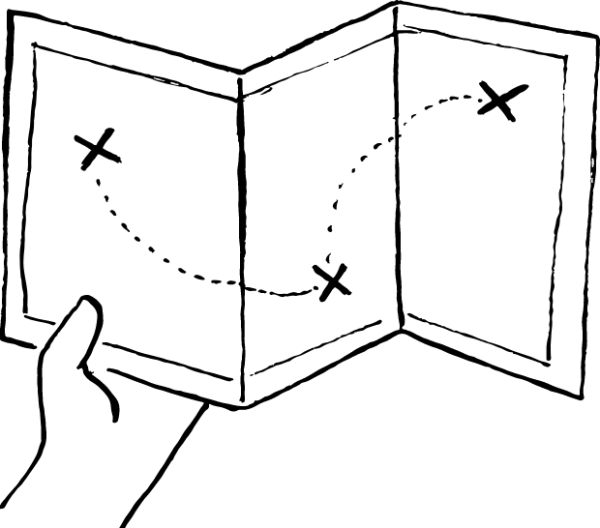Easter Customs and Traditions from all over Greece

Easter, this great holiday of Christianity, is celebrated in a special way in every corner of the country, and especially in some areas, customs, and traditions are revived that give a special “color” to this festive period. The “burning of Judas”, Horse Racing, Egg Battles, the representation of the Apostasy of the Crucified, and the Resurrection in cemeteries are just some of the traditions that continue in cities and villages.

Easter in Central Macedonia
In Nea Mesimvria, Thessaloniki, on Good Friday, the two Epitaphs of the parishes, after their procession in the streets, meet shortly after 9 pm in the cemeteries. There, residents light candles on their loved ones who have passed away, and “night becomes day” by candlelight.
In Serres, on Good Friday, during the procession of the Epitaph, in the district of Agios Ioannis the Theologian, the custom “Adonia” is revived in which the image of the Crucified, framed by lilacs and other flowers is placed. In addition, they prepare a dish with barley or lentils, a custom that refers to the “Adonidos Gardens”. The “Adonidos Gardens” according to folklore tradition, symbolizes the youth that is lost quickly and unjustly, like Adonis who died from a boar bite. In antiquity, on the first day of the custom, the representation of his funeral took place, and on the second day, the celebration of his resurrection. Today, housewives place legumes and barley for prosperity, rich crops, and a full family table.
On Easter Sunday, the Pontian Easter custom “egg fights” is revived in Kastanousa Kerkini of the enlarged municipality of Heraklias. The custom has its roots in Pontus and symbolizes the Resurrection of the Lord. Also, it symbolizes the conflict between good and evil. The basic rule of custom is to use only chicken eggs.
In Pella, in the village of Margarita, on the second day of Easter, the local custom of Breaking Eggs takes place and local traditional dishes are offered to visitors.
On the beach of Sykia, in Halkidiki, on the third day of Easter horse races are organized at the municipal camping “mills”. Horse racing is a custom that has deep roots in time and has been successfully revived in recent years.
Customs in Eastern and Western Macedonia
On Good Friday night, in Nea Peramos, during the procession of the epitaph, the inhabitants in each neighborhood revive a very old custom: they burn from a statue of Judas as the procession of the epitaph passes through the streets.
On the third day of Easter, in the local community of Eleftheron Kavala, the traditional “Mazidia” are revived. The faithful carry in procession the icons from the Byzantine church of Agios Taxiarchis, to “Mazidia” where the picturesque chapel of Saints Raphael, Irene, and Nicholas is located. Then, in the square of the old traditional settlement, they celebrate.
In the Peripheral Unit of Drama, the procession of the image of the Resurrection around the rural village of Kali Vrysi is of special interest, to protect the village from any evil.
In Western Macedonia, on the night of MaundyThursday, the Twelve Gospels, women bring cookies and after church they distribute them.
The inhabitants of Kozani perform Resurrection in the cemetery of Agios Georgios. They gather around the memory of their dead and with the candles lit they wait for “Christ is Risen”, while they do not forget to leave a red egg in the memory to “fill” the lost member of the family.

Easter in the Cyclades
The days of Easter have a special color and aroma in the islands of the Cyclades, in the most picturesque – for many – island complex of the Greek seas. There, where the gunpowder war of Milos is combined with the sinking of the Epitaph in the sea, in Tinos, the burning of Judas in Mykonos with the representation of the Passion in Paros, and the thousands of lit tins in the village of Pyrgos in Santorini, creating a magical setting.
The countless, traditional, Easter customs in combination with the all-night atmosphere make the Cyclades an ideal destination. After all, the Easter holidays are the beginning of the tourist season. Therefore, the islands begin to welcome Greek and foreign visitors. Everyone just wants to get a taste of the blue waters of the seas along with the customs, traditions, and local flavors.
Ios and Folegandros
In Ios, on Good Friday, after the Apocalypse, the young people of the island play the “balls”, a game with small, iron-red, and green balls. On Easter Sunday, the Municipality of Ieton organizes a feast with lambs and wine. Everyone – locals and visitors – are welcomed. On the second day, the Cultural Association of Ios revives the traditional custom of Kounia. Young girls of the island, dressed in traditional costumes, set up swings in the center of Chora. The boys rock them while the girls sing traditional love songs.
In Folegandros, on Holy Saturday all the houses of the island are open to receive the blessing of the Virgin, whose procession lasts three days. On Easter Sunday, they transport the image to Chora and the alleys of the Castle, with a barrage of fireworks. On the second day of Easter, the icon blesses the boats in the port and late at night returns to the monastery of Panagia. It remains there until next Easter.
Easter in Meteora and Kalambaka
The area of Kalambaka celebrates Easter in its unique way. The monasteries of Meteora play a special tone, highlighting the spiritual dimension of the Resurrection of the Lord. At the same time, customs and celebrations in the wider area compose an ideal setting for these days.
And it is not only the monasteries of Meteora. It is the surrounding areas (Stagiades, Chrysinos, Siamades, Agios Theodoros, Vytoumas) that give spiritual glamor throughout the Holy Week. During these holy days in Meteora, the visitor feels the local hospitality in a natural environment of colors and aromas.
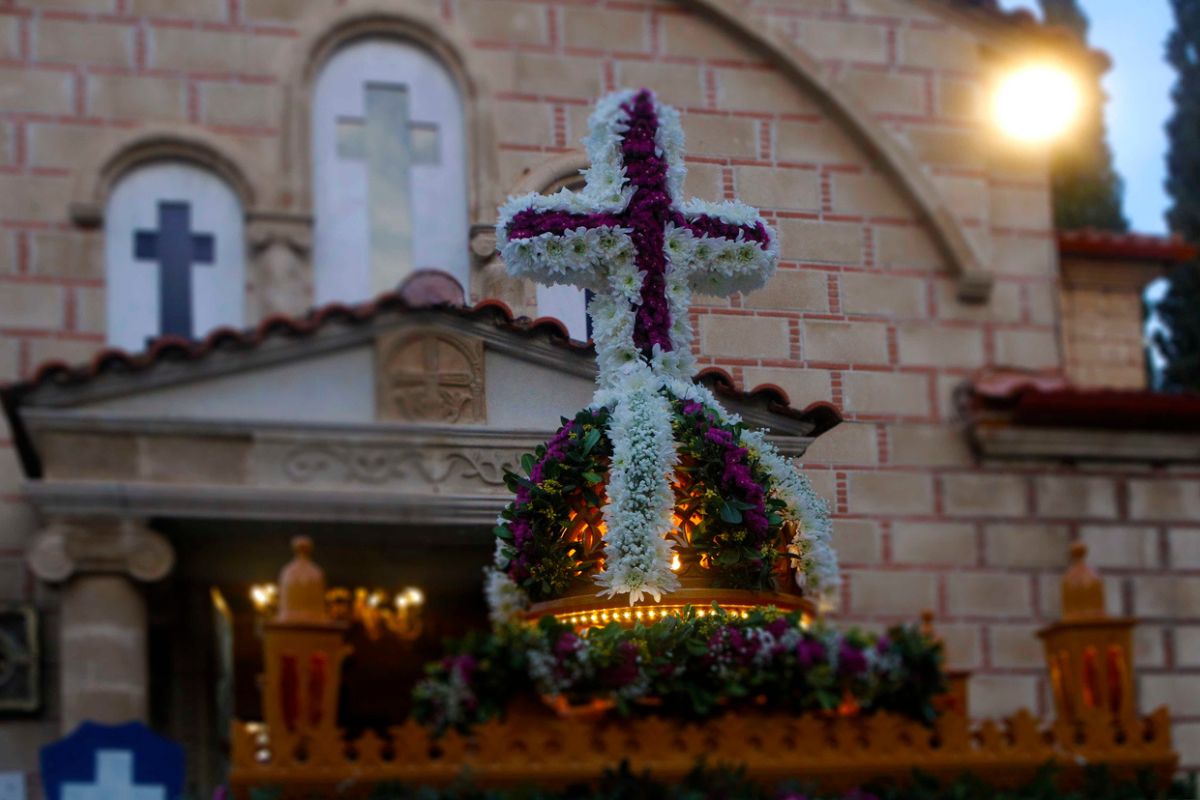
Easter in the Peloponnese
The celebration of Easter is unique in Tsakonia, with the spectacular custom of launching, with the resurrection light, hundreds of colorful balloons from Tyros and Leonidio, and traveling over the Myrtos Sea, reaching Spetses.
In Leonidio, the night of the Resurrection is the night of the balloons. When hearing “Christos Anestis” the balloons catch fire and take off. They climb high and, for 30 to 40 minutes, embroider the sky. The spectacle is unique! The anxiety peaks because the competitors from the other parishes keep a record of failures!
On Easter Sunday, the traditional skewers with lamb and kokoretsi take place in the town hall garden. Locals and visitors celebrate together. The procession of Love takes place in the afternoon, in the square of 25th of March. They read the Gospel in the Tsakonian dialect, while immediately after the locals dance the unique Tsakonian dance.
On Easter Sunday, the custom of Saitopolemos (war paper planes) is revived in Kalamata. It is a popular local custom, whose roots go far back in time, to the liberation struggles of 1821. The participants – many of them dressed in traditional costumes – armed with shuttles that they have made themselves from cardboard tubes filled with gunpowder, start the launch and “stir up” the crowd that is watching. The “bouloukia” (groups of saitologists) revive the custom that emphasizes the ingenuity of the Greeks and reminds them of their heroism during the Turkish occupation.
Easter in the “Jerusalem of the Aegean” – Patmos
In which area of Greece can one make the “second Resurrection”, listening to the Gospel read in Italian, French, Russian, English, German, Serbian, and ancient Homeric Greek? In the same area, where the faithful can attend the services in a chapel, built in the cave where the Evangelist John practiced!
Patmos, the island where John wrote the Apocalypse. The customs that give Easter in Patmos such a special character. Starting from Maundy Thursday, with the ceremony of the Sink. It is a representation of the secret supper, during which the Abbot washes the feet of 12 monks, who are sitting around a platform, as Jesus did with his disciples.
On Good Friday, in the Monastery of Agios Theologos, the representation of the Apostasy takes place. From the evening of the same day, the Epitaphs from the churches of the island cross the cobbled streets and meet in the central squares. The special customs of the island include the second resurrection at the Monastery of Patmos. Then, on Easter Sunday afternoon they read Gospel in the languages mentioned above.

Easter in Chios
The festive events in Chios have a special splendor, with the most characteristic custom of rocket war in the village of Vrontados. The village has been starring in the events of the island for years. Its custom is as old as the naval tradition of the island. This “war” between the parishioners of Panagia Ereithiani and Agios Markos has been going on since the years of Ottoman rule. The thousands of rockets fired on the night of the Resurrection make day and night and offer an impressive spectacle.
The target is the dome and the emblem of St. Mark on the one hand and the clock of Panagia Erethani on the other. The preparation takes months with the younger ones preparing the explosive mixture of coal, nitro, and sulfur. The improvised rockets are mounted on wooden bases and the whistling of a horn gives the signal for the start of the “hostilities”. A temporary “ceasefire” follows for the faithful to come to the Church. As soon as they hear “Christos Anestis” a storm of fire breaks out between the parishes. This unique spectacle attracts thousands of locals and tourists every year, as it is unique in the world.
Easter in Samos
In Marathokampos of Samos, on Easter Sunday, the custom of “Rifles” has been maintained for almost 100 years. Some even associate it with the revolution of 1821. Nowadays, the inhabitants try every year to offer a more impressive spectacle, attracting visitors from all over Greece and the world. People prepare for this custom months in advance. They gather their materials and slowly build an incredible number of “launchers – rifles”. Each parish has in its collection 1600 – 2000 “rifles”. They place them on the ground with the orientation of the opposite mountains and each parish presents its spectacle. The winner’s aim is to present the noisiest and smokiest spectacle. When the process is over, everyone celebrates together with eggs, buns, and traditional Samian wine.
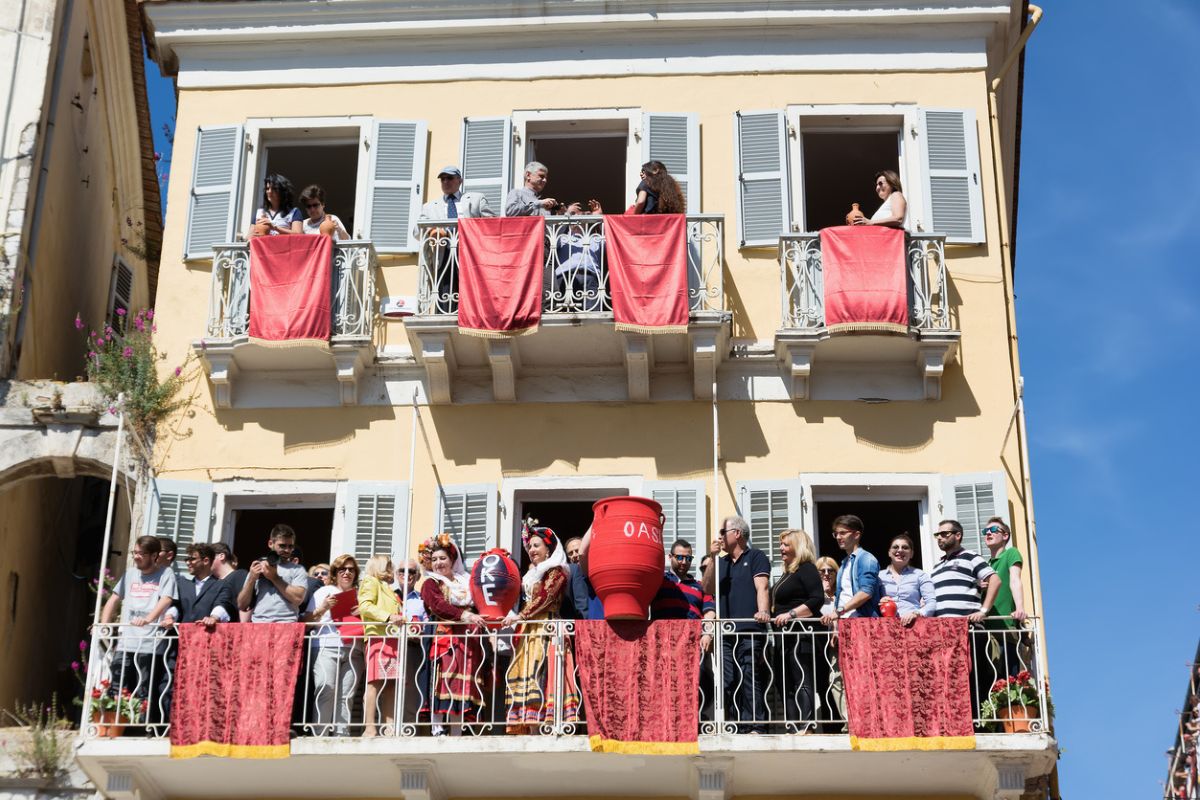
Easter in Corfu
With the signal of the first Resurrection at midnight, the people of Corfu throw huge jugs full of water from their balconies. They are clay jugs with a narrow mouth and two handles on the side for transporting them. The balconies are decorated and the residents tie red ribbons on them as red is the color of Corfu.
All this results in the creation of a shocking atmosphere. It is intensified by the thunderous cannonades from the fortress while the cobbled cantons are full of broken jugs. The music comes from the 18 Philharmonic Orchestras of the city but also the applause and the cries of joy of the attendees. The “noisy” Resurrection does not stop here. With the breaking of the pitchers, the bells of the city begin to transmit the joyful message. One after the other, the bells, like an unbroken chain, bring the message to the smallest village.
This year Easter Sunday, for Orthodox Christians, falls on April 16th. A perfect date to witness all the celebrations that take place in Greece! Contact us here so we can design a Personalized Easter Itinerary just for you!
Feeling Ready?
From our blog
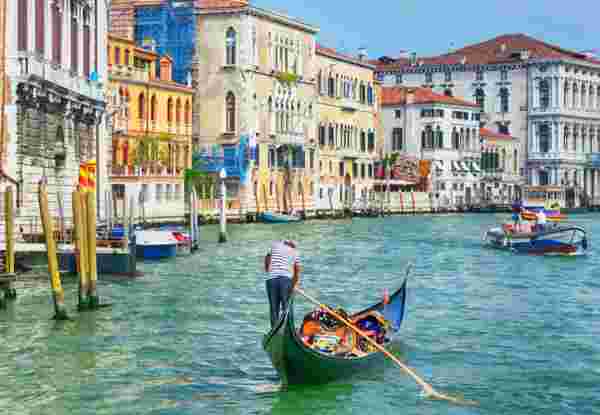
Exploring Venice and Its Canals
READ MORE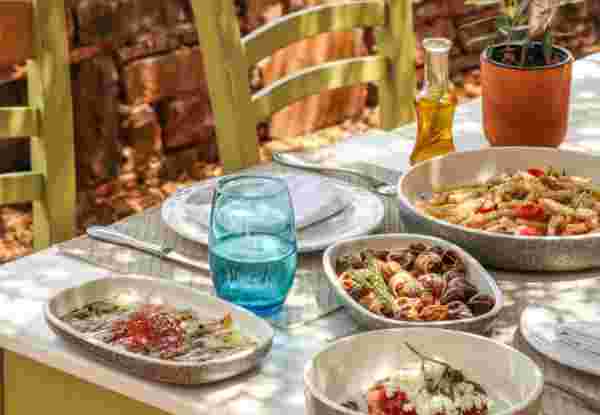
Crete for Seniors: A Complete Guide
READ MORE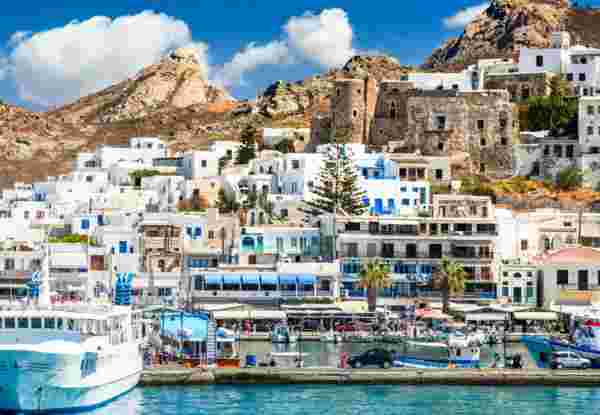
How to Explore Naxos for Seniors
READ MORE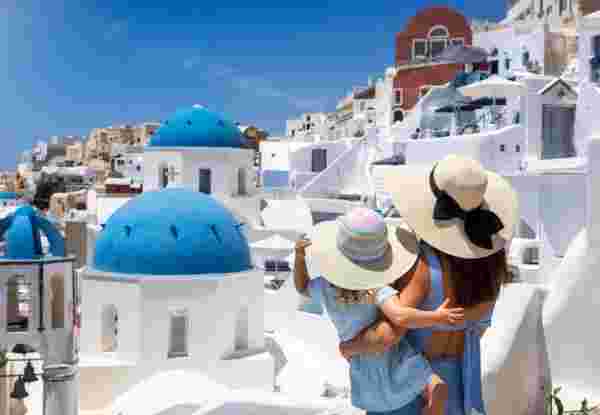
Why Visit Santorini with Kids: A Fun Family Guide
READ MORE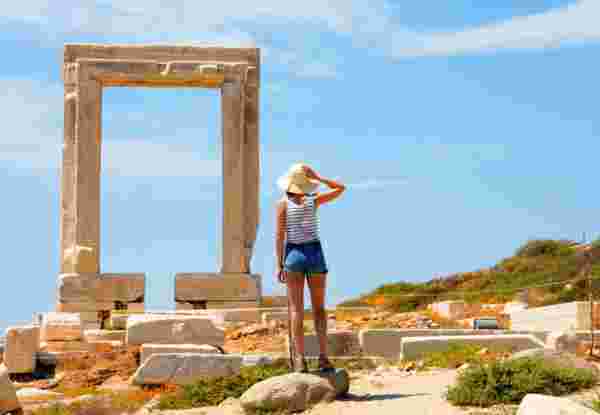
Honeymoon in Naxos: A Complete Guide
READ MORE
Visiting Athens with Kids: A helpful Guide
READ MORE
Paros for Seniors: Tips and Itinerary
READ MORE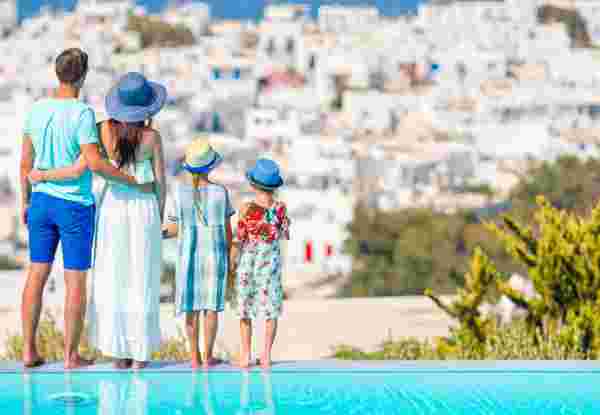
Best Resorts in Greece for Families: Your Ultimate 2025 Guide
READ MORE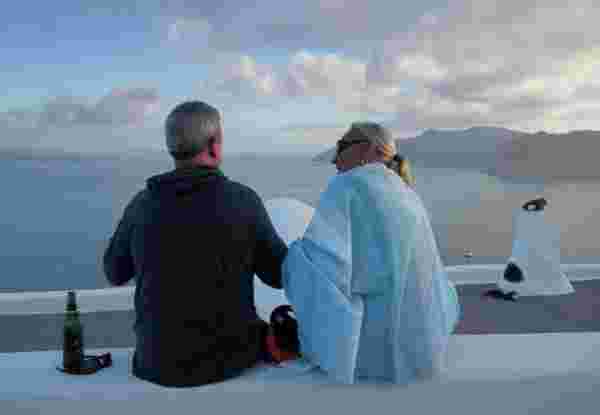
How to Enjoy Santorini for Seniors
READ MORE